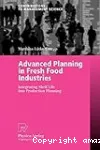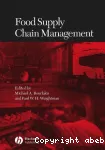Adresse
Infodoc : Réseau des bibliothèques et centres de documentation d'AgroParisTechFrance
contact

Catégories
|
Thésaurus Agro-alimentaire , SCIENCES , INFORMATIQUE , PRODUCTIQUE , GPAO
GPAOSynonyme(s)GESTION DE PRODUCTION ASSISTEE PAR ORDINATEUR |
Documents disponibles dans cette catégorie (18)
 Ajouter le résultat dans votre panier Faire une suggestion Affiner la recherche Interroger des sources externes
Ajouter le résultat dans votre panier Faire une suggestion Affiner la recherche Interroger des sources externes
 Livre63,25
Livre63,25978-3-7908-1592-4240 p.
240 p.Prix : 63,25 ISBN : 978-3-7908-1592-4 
 Livre
Livre978-2-85003-037-6p. disc.
p. disc.ISBN : 978-2-85003-037-6 
 Livre
Livre978-2-85003-027-7p. disc.
p. disc.ISBN : 978-2-85003-027-7 
 Livre
Livre978-0-85709-677-71 vol. (XXXVI-357 p.)
1 vol. (XXXVI-357 p.)ISBN : 978-0-85709-677-7 
 Livre
Livre978-1-85166-030-81 vol. (XII-278 p.)
1 vol. (XII-278 p.)ISBN : 978-1-85166-030-8 
 Livre37.00 EUR
Livre37.00 EUR978-2-10-053015-11 vol. (XII-420 p.)
1 vol. (XII-420 p.)Prix : 37.00 EUR ISBN : 978-2-10-053015-1 
 Livre56
Livre56978-1-4051-0168-4236 p.
236 p.Prix : 56 ISBN : 978-1-4051-0168-4 
 Livre
Livre978-2-7430-0122-31 vol. (XIV-466 p.)
1 vol. (XIV-466 p.)ISBN : 978-2-7430-0122-3 
 Livre
Livre978-2-7081-1116-5232 p.
232 p.ISBN : 978-2-7081-1116-5 
 Livre60
Livre60978-2-7462-0264-1267 p.
267 p.Prix : 60 ISBN : 978-2-7462-0264-1 
 Livre601
Livre601978-0-412-99491-3349 p.
349 p.Prix : 601 ISBN : 978-0-412-99491-3 
 Livre
Livre978-1-4987-3275-81 vol. (XXII-454 p.)
1 vol. (XXII-454 p.)ISBN : 978-1-4987-3275-8 
 Livre
Livre978-2-7178-3071-2741 p.
741 p.ISBN : 978-2-7178-3071-2 
 Livre151,06
Livre151,06978-0-8493-7244-5340 p.
340 p.Prix : 151,06 ISBN : 978-0-8493-7244-5 
 Livre
Livre978-2-225-84046-31 vol. (305 p.)
1 vol. (305 p.)ISBN : 978-2-225-84046-3 
 Livre60 EUR
Livre60 EUR978-2-7462-0265-81 vol. (254 p.)
1 vol. (254 p.)Prix : 60 EUR ISBN : 978-2-7462-0265-8 
 Livre39 EUR
Livre39 EUR978-2-7430-1435-31 vol. (XIX-273 p.)
1 vol. (XIX-273 p.)Prix : 39 EUR ISBN : 978-2-7430-1435-3 
 Livre
Livre978-2-12-470211-41 vol. (XX-309 p.)
1 vol. (XX-309 p.)ISBN : 978-2-12-470211-4




